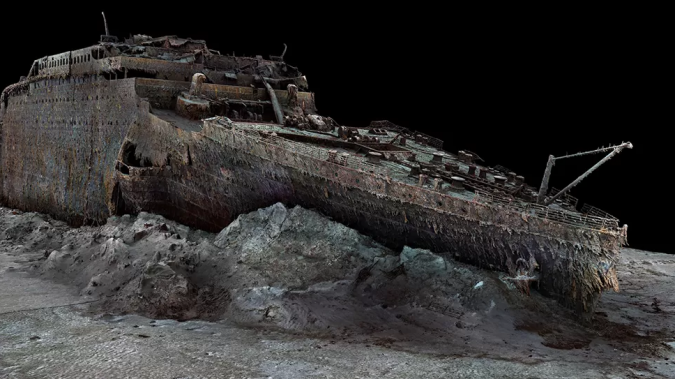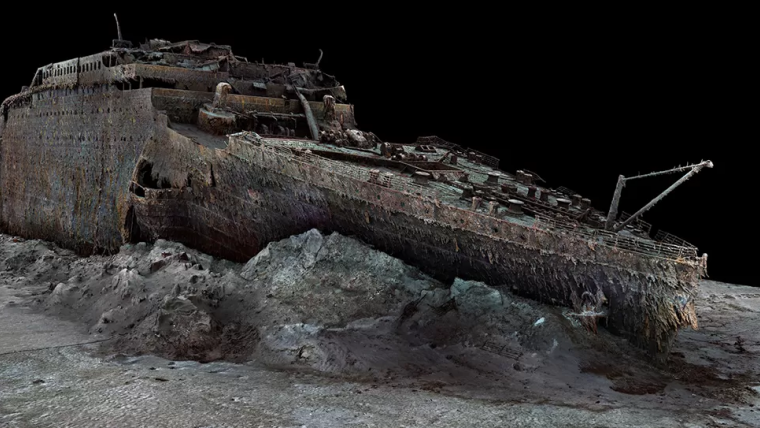Unprecedented 3D scanning brings Titanic shipwreck to life
Magellan, a deep-sea mapping company, and Atlantic Productions, a British television company, have embarked on an ambitious collaboration to conduct a comprehensive scan of the RMS Titanic. This iconic British passenger liner, which tragically sank in 1912, serves as the centrepiece of an upcoming documentary by Atlantic Productions. Undertaken in 2022, this arduous venture delved into the depths of the Atlantic Ocean, unveiling the secrets concealed within the Titanic’s decaying remains.
To achieve this remarkable feat, Magellan deployed a flotilla of remotely operated submarine robots from a specialized ship. These robots meticulously scanned the deteriorating structure of the Titanic for over 200 hours, braving the frigid, pitch-black waters of the Atlantic seabed, which lay 3,800 metres below the surface. The survey encountered the challenges posed by underwater currents while meticulously avoiding any disturbance or harm to the liner’s rust-covered remnants.
700,000 images to reconstruct the Titanic in 3D
The fleet of robots captured a staggering 700,000 images, which were subsequently used to construct a precise 3D representation of the shipwreck. Gerhard Seiffert, the leader of expedition planning at Magellan, revealed to the BBC that the company meticulously scanned and mapped every square centimetre of the Titanic with exceptional precision. The scans encompassed shots of the hull, along with seemingly inconspicuous elements such as the debris field and the surrounding mud.
The resulting 3D reconstruction vividly portrays the iconic bow of the Titanic, which, even after over a century submerged in the ocean, remains remarkably recognizable. Adorned with stalactites of rust, the bow bears witness to the passage of time. Atop the bow, the boat deck reveals a haunting void, once occupied by the grand staircase, visible through a gaping hole. In contrast, the stern presents a chaotic jumble of metal wreckage strewn with unopened champagne bottles and scattered personal belongings, including abandoned shoes.
Within the 3D scan, a sizeable aperture in the deck unveils remnants of the ship’s grand staircase, while smaller details, such as a carved serial number on one of the metallic propellers, are also discernible. Parks Stephenson, a Titanic researcher, expressed overwhelming astonishment on witnessing the reconstruction for the first time.
Stephenson emphasized that the 3D scan accurately depicts the current state of the Titanic, providing an unprecedented view since the ship’s discovery on the seabed in 1985. The sinking of the Titanic remains the deadliest single-ship maritime disaster on record, claiming the lives of approximately 1,500 out of the estimated 2,224 passengers and crew on board.
Shedding light on the collision
Highlighting the significance of the digital survey, Stephenson acknowledged lingering questions regarding the Titanic’s collision with the iceberg. The new scan presents an opportunity to shed light on the true condition of the ship as it met its final resting place on the seabed. By studying these scans, researchers hope to gain fresh insights into the events surrounding the fateful night in 1912.
The relentless forces of the deep are gradually eroding the wreckage, with microbes consuming the hull and its components disintegrating over time. The new scan allows researchers to ‘freeze’ the empty shell of the Titanic in a temporal snapshot, facilitating their analysis and preserving invaluable historical information.















